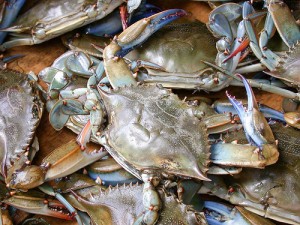
OCEAN CITY — The prospects for a strong crab season in and around the resort and across the state improved this week when the Maryland Department of Natural Resources (DNR) released the results of the 2016 blue crab winter dredge survey, indicating a continued dramatic increase in the population.
The DNR on Tuesday released the results of the 2016 blue crab winter dredge survey, which showed another year of remarkable growth in the stock of the Chesapeake Bay crab population. The survey indicated a bay-wide crab population of 553 million, representing a 35 percent increase over last year.
The 553 million blue crabs estimated in the bay is the fourth highest level in two decades and continues to build on last year’s 38-percent boost in abundance. DNR Fisheries Director Dave Blazer said the continued rebound for blue crabs in the Chesapeake was likely the result of a variety of factors.
“Due to a milder winter, favorable currents and tides, and wise bay-wide management measures, the Maryland crab population continues to rebound and strengthen,” he said. “With an increase in abundance and steady recruitment, we fully anticipate a robust crab season this year.”
Improvements were seen in all age groups for both male and female crabs. For example, the spawning female stock nearly doubled from 101 million to 194 million. The adult male stock more than doubled, from 44 million to 91 million, representing the second highest level since 1995. The number of spawning-age female crabs remained below the target of 215 million, but above the minimum threshold established in 2011. The juvenile crab population increased slightly from 269 million to 271 million, or just above the 27-year average.
While the numbers are impressive for the most part, DNR officials remain vigilant against continued threats to the iconic blue crab in Maryland and will continue to monitor and manage the population.
“The highly variable nature of the blue crab population means that we must maintain a degree of caution in considering management adjustments,” said Chesapeake Bay Stock Assessment Committee chairman Glenn Davis.
The 2015 bay-wide crab harvest increased by 42 percent over 2014 to 50 million pounds and remained at sustainable levels for the eighth consecutive year. This combined with increased abundance means that a slight liberalization of harvest limits for female crabs may be warranted this summer, but Blazer said the DNR won’t loosen the regulations based on the favorable stock assessment alone.
“Our experts will now discuss the survey results with our internal and external stakeholders,” he said. “Any modest adjustment to the current regulations, be it season length or bushel limit, will be considered only after the department receives input from all parties.”
The Chesapeake Bay Stock Assessment Committee plans to release a full analysis this summer. The annual Winter Dredge Survey, conducted by the Maryland Department of Natural Resources and Virginia Institute of Marine Science since 1990, is the primary assessment of the Chesapeake Bay’s blue crab population.
In the survey, biologists use dredge equipment to capture, measure, record and release blue crabs at 1,500 sites throughout the bay from December through March. Crabs tend to bury in the mud over the cold winter months, which makes it possible for scientists to develop accurate estimates of the number of crabs.

